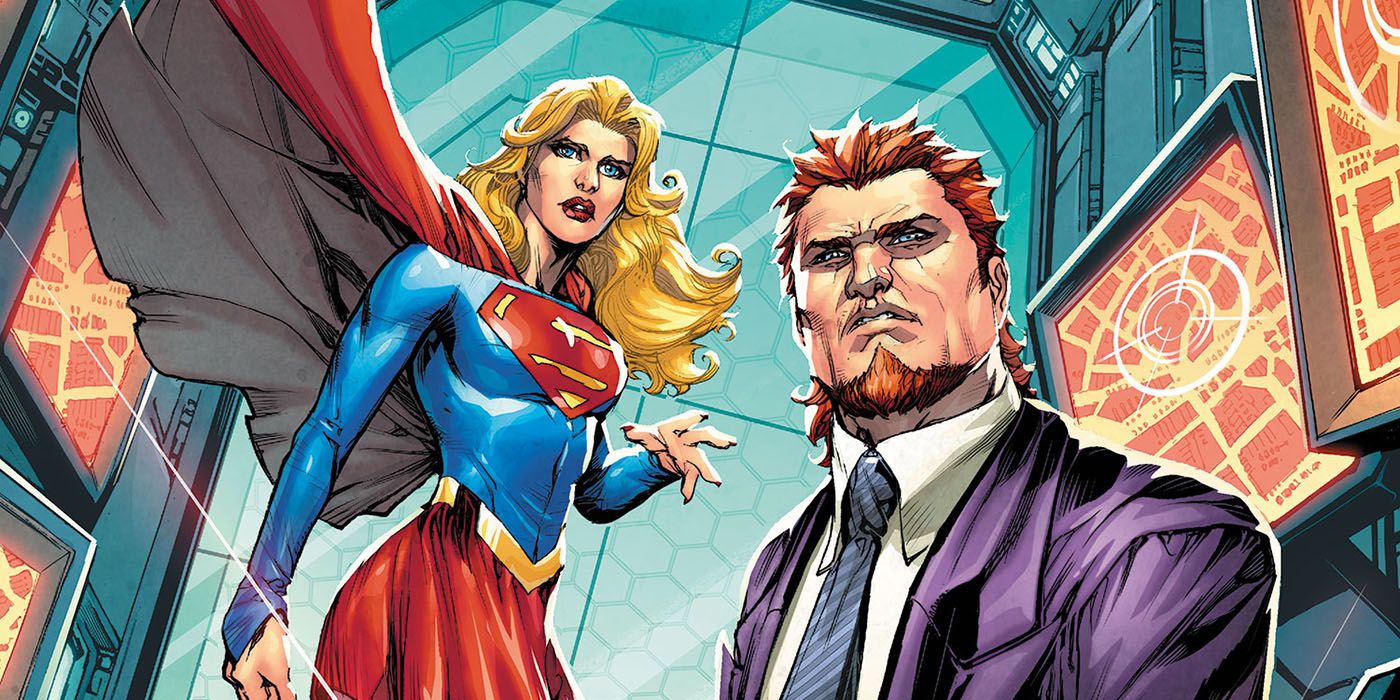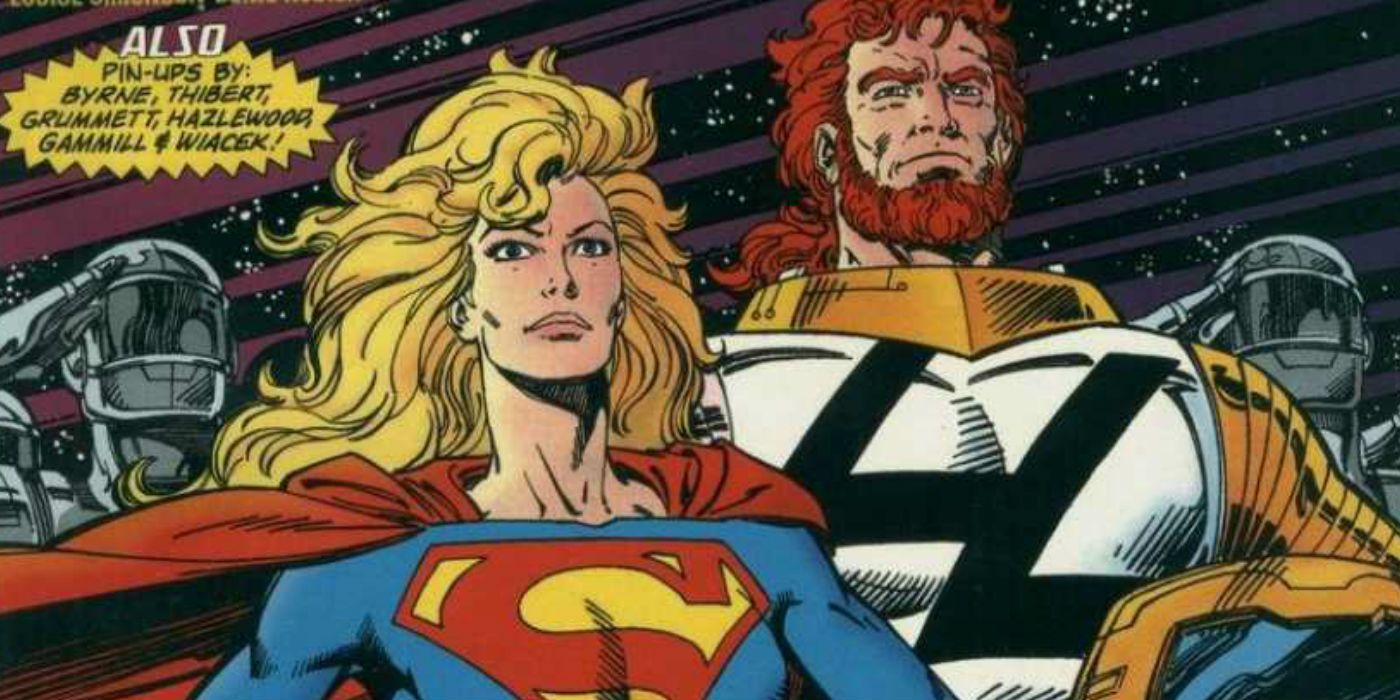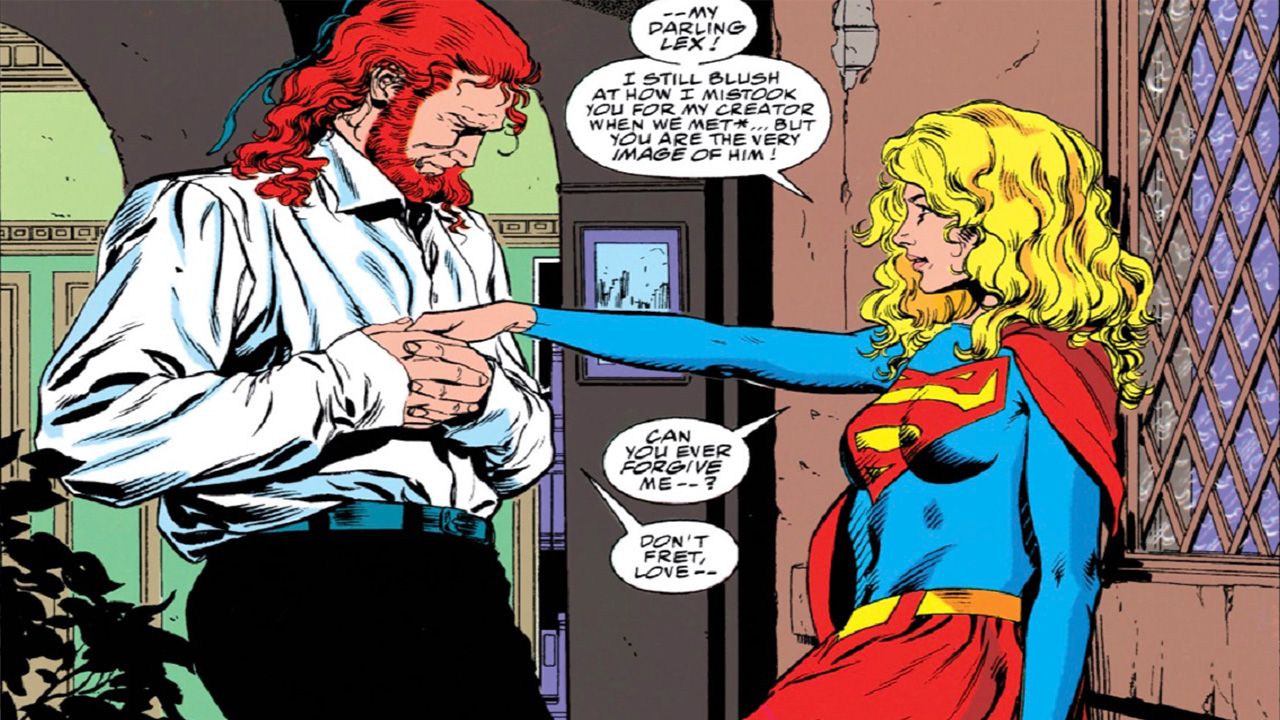Lex Luthor is easily Superman's most recognizable and well-known villain, while Supergirl fills a similar role in his superpowered supporting cast. The Post-Crisis DC comics book canon radically changed their roles, however, in particular redefining how would be written for decades afterward. Lex was no longer a mad scientist, whereas this new Supergirl, though she looked like it, was unrelated to Superman biologically. The Post-Crisis versions of the Lex and Supergirl would eventually find themselves in one of DC's most surprising and unexpected romantic relationships. What began as an unforeseen whirlwind Metropolis romance ended in flames and paralysis.
RELATED: Superman: An Iconic DC Story SECRETLY Changed the Man of Steel Forever
Panic In the Sky
Lex Luthor had already been interpreted by John Byrne from a mad scientist into a corrupt businessman in 1986's Man of Steel, but due to cancer caused by exposure to Kryptonite, this version of Luthor died. Unbeknownst to the public, including Superman, Luthor cloned himself a younger body and posed as Lex Luthor II, a theretofore unknown illegitimate son who took over his "father's" business operations. This new, seemingly benevolent Luthor would come to meet Supergirl in 1992's "Panic In the Sky," though this wasn't the more popular Kara Zor-El character. This was due to an editorial mandate at the time that ensured that Superman was the true last son of Krypton, meaning that no other Kryptonians would be brought into the mainstream universe.
The Post-Crisis Supergirl was a character called Matrix, who was built by an alternate version of Lex Luthor in a pocket dimension. Created from protoplasm, this creature had incredible physical and mental abilities, as well as the power to shapeshift. Using this, she would take on a more humanoid form, wear a female version of Superman's costume, and become Supergirl. Matrix and Luthor would subsequently fall in love, to the horror of Superman and the Kents. Despite their protestations, she would even move in with the handsome young heir. The two's relationship would become well-known to the public, though this was the root of their several eventual problems.
RELATED: Superman Reveals Superwoman's Last Adventure
The Clone Saga
Many in Metropolis saw Supergirl as less of a hero like Superman and more of Luthor's personal bodyguard or even pet. This was especially the case when Lex II kept her from joining Superman against Doomsday for as long as possible, though she was quickly defeated by the monster, anyway. Quickly acting to fill in for Superman after his death, Supergirl did her best to protect Metropolis in spite of what the public thought of her. Her heroism, along with Steel's, even rubbed off on the cocky young Superboy.
Supposedly worried over his beloved, Lex put Matrix through a series of continuous tests that tried to determine the limits of her powers. Eventually, it was revealed that Lex was developing an entire army of Matrix Supergirl clones and that all of the tests were meant as ways to collect genetic material and data. This infuriated her to no end, leading her to destroy the gestating clones before turning her wrath upon Lex himself. Saving him was ironically both Superman and his own paralysis, with the latter being due to a genetic defect rampant among clones. This would end Matrix and Luthor's relationship, as well as Matrix's frequent appearances in the Superman comics. She would be reinterpreted by Peter David later down the road until being officially replaced by a new version of the classic Kara Zor-El. Since the New 52, Kara has once again been the one and only Supergirl, with the other Post-Crisis oddities being forgotten to time. Though DC Rebirth has brought back a lot of Superman continuity, Kara would seem to have still been the only Supergirl, making the star-crossed romance between Matrix Supergirl and Lex Luthor all but canonical.
RELATED: DC Releases Solicits for Brian Michael Bendis' Final Action Comics, Superman Issues



